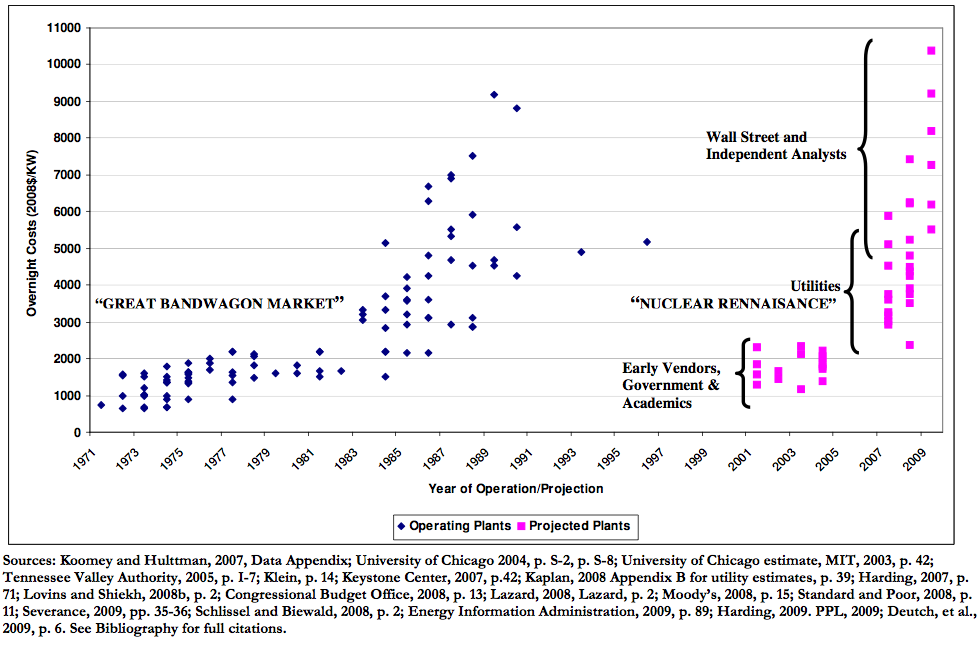How much?20 November 2007
Nuclear Engineering International
For some utilities, the capital costs of a new nuclear power plant are prohibitive.Just before the release of the US Energy Information Administrations (EIAs) Annual Energy Outlook 2005 (AEO 2005) the then senior vice president of nuclear generation and chief nuclear officer at the
Nuclear Energy Institute (NEI), Marvin Fertel, told the Senate Energy and Natural Resources Committee that the assumptions made on new nuclear plant construction were erroneous. The EIA had assumed overnight capital costs of $1928/kWe, which Fertel claimed were
unrealistically high, and inflated.The EIA, Fertel said, assumed that new nuclear plants would experience the same delays, lengthy construction periods and high costs experienced by some of the plants built in the 1980s and 1990s. These assumptions were unrealistic owing to advances in construction techniques and new simplified, standardised plant designs. More realistic overnight capital cost estimates of new nuclear were of the order of $1400-1500/kWe for the first-of-a-kind and $300 less for the nth-of-a-kind, he claimed.
The EIAs estimate, however which has not changed significantly since AEO 2005 was actually optimistic when compared to a 2003 report by Massachusetts Institute of Technology (MIT), titled The Future of Nuclear Power, where the base case overnight capital cost for nuclear was $2000/kWe (in 2002 dollars).
There are many other figures available, including the June 2007 report by The Keystone Center, titled Nuclear Power Joint Fact-Finding. This study, which was funded by several nuclear plant operators as well as other interested parties including General Electric and NEI, estimates overnight costs of $2950/kWe (in 2007 dollars). With interest, this figure translates to between $3600/kWe and $4000/kWe.
Interestingly, when Nuclear Power Joint Fact-Finding was released, the nuclear industry press chose to either focus on other aspects in particular the finding that nuclear is a viable option for dealing with climate change or ignore the report altogether. Considering the number of organisations involved in the nuclear industry that backed the report, this low level of coverage is anomalous, and suggests a certain amount of discomfort with the findings.
However, prohibitively high though it may at first appear to be, even the figure for new build costs in The Keystone Center report is considered too low by some observers.
Independent energy consultant...
http://www.neimagazine.com/storyprint.asp?sc=2047917I just had to share those comments from the Nuclear Energy Institute since they mirror precisely the willingness to deal with reality we see here on DU everyday from the proponents of nuclear power. Here is a reasonably up to date graph of the way cost estimates have unfolded:

Cooper's analysis of what is behind this bizarre price estimating scheme amount to the claim that the nuclear industry is lowballing the estimates (they won't provide price guarantees under any circumstances) in an attempt to "hook" the taxpayer into sinking billions into a project before revealing that more billions, then even more billions, are going to be needed.
Cooper report summary here:
http://www.olino.org/us/articles/2009/11/26/the-economics-of-nuclear-reactors-renaissance-or-relapse